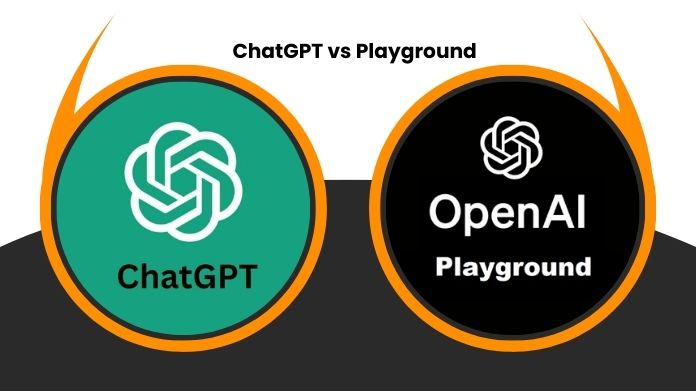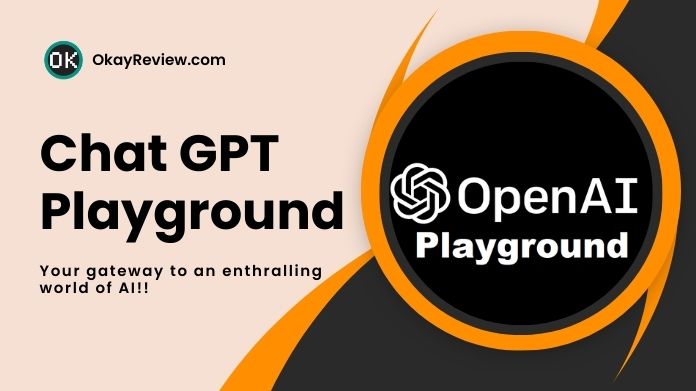Have you ever dreamt of engaging in captivating conversations with a friendly AI chatbot that seems almost human? Welcome to the extraordinary world of Chat GPT Playground!
Okayreview delves deep into Chat GPT Playground, a novel development demonstrating GPT Playground’s incredible possibilities.
So, are you ready to explore the mysteries of Chat GPT Playground, where AI will serve as your conversational partner? Join us as we decipher the secrets of language AI one talk at a time!
Let’s embark on this exciting adventure to uncover everything you need about Chat GPT Playground!
Table of Contents
What is Chat GPT Playground?
The Chat GPT Playground is an interactive online platform powered by OpenAI that allows users to interact with the cutting-edge ChatGPT language. It is a web-based application that mobile, PC, tablets, etc can access.
ChatGPT, based on the robust GPT-3 and GPT-4 architectures, creates text answers that closely mimic human language.
Users may safely explore ChatGPT’s capabilities in this sandbox environment, experimenting with different prompts, settings, and models and observing how it responds to varied inputs.
The Chat GPT Playground allows users to assess the potential and adaptability of this powerful AI model by offering a user-friendly interface.
OpenAI’s official documentation will provide up-to-date information and usage recommendations as the platform improves.
What is the Difference Between ChatGPT and Playground?

OpenAI provides two programs, ChatGPT and Chat GPT Playground, developed for user interactions with GPT models. They do, however, have different characteristics and functions.
ChatGPT: Based on GPT-3 and GPT-4 architectures, this conversational AI model provides human-like text answers to user inputs.
It reacts to user inquiries appropriately and contextually with fine-tuning, making it a trustworthy conversational companion.
Chat GPT Playground: Chat GPT Playground, as an online platform, provides users a sandbox environment to engage with the ChatGPT model.
It provides an intuitive interface for experimenting with prompts, settings, and multiple models.
The Chat GPT Playground extends ChatGPT by giving more capabilities and flexibility in accessing and utilizing the chatbot.
What Has Improved in ChatGPT 4 to ChatGPT 3.5 Playground?
ChatGPT 4 Playground features substantial enhancements over ChatGPT 3.5. It now takes picture input for categorization, image analysis, and caption generation tasks.
Furthermore, the chatbot can handle lengthier texts, supporting up to 25,000 words, compared to 3,000 words in the regular ChatGPT 3.5 edition.
According to OpenAI, GPT-4 is more creative, with improved reasoning abilities, allowing for more complicated requests and more satisfactory solutions.
Furthermore, factual accuracy has increased by 40% as compared to GPT3.5.
GPT-4 is already used in apps such as Duolingo, Bing Chat, and Stripe, and ordinary ChatGPT customers with GPT-4 access may use these enhancements through the ChatGPT Plus subscription.
How to Use ChatGPT Playground?
With these easy steps, using Chat GPT Playground is a breeze:
- Go to the ChatGPT Playground website and sign up for a free account; no downloads are necessary.
- After you’ve logged in, navigate to the playground dashboard and type your prompt or question into the input form.
- Select the model and settings that best meet your needs from the available options.
- Click “Submit” to produce text based on your input and settings. Feel free to submit more replies by clicking “Submit” again.
- You may now use the created text for various applications, such as writing projects, social media postings, or any creative endeavor. With Chat GPT Playground, the possibilities are endless!
Benefits of Using Chat GPT Playground
- NLP and Machine Learning algorithms: Utilizing its advanced natural language processing capabilities, Chat GPT Playground comprehends conversations’ context more effectively, resulting in more precise and accurate responses.
- Intuitive Interface: Thanks to its user-friendly interface, users can unleash their creativity in discussions without coding.
- Analytics: It delivers strong statistics that provide insights into talks, allowing users to make better decisions.
- Flexibility and Customization: Its versatile and configurable capabilities enable users to personalize interactions for each user or group of users.
- Expansive Vocabulary: Its large vocabulary enables users to have more natural discussions and provide correct replies.
Limitations of Chat GPT Playground
- Access Differences: Chat GPT Playground in GPT 3.5 is free to access, while GPT-4 is not.
- Mistakes in Factual Replies: GPT-4, despite improvement, is still prone to making factual and reasoning mistakes.
- Addressing Social Prejudice: AI chatbot responses might reflect social prejudice concerns, an issue being acknowledged and addressed by OpenAI.
- Limited Public Availability: Due to restricted access and ongoing API integration, Chat GPT4 Playground has yet to be fully available with all its features.
Wrapping Words
The Chat GPT Playground expands the realm of human-computer interactions. The road has been packed with advances and obstacles, from GPT 3.5’s free accessibility to GPT-4’s breakthroughs.
With this cutting-edge technology, let’s eagerly anticipate a more inclusive and refined conversational experience.
Frequently Asked Questions
Q. Does ChatGPT Plus Give Access to the Playground?
Ans. The API and Playground are not available with the ChatGPT Plus subscription. ChatGPT Plus is distinct from the API and Playground. They are two distinct goods.
Q. Is GPT 4 Available on the Playground?
Ans. The Playground provides practically all of the GPT-4 API’s features, allowing users to explore GPT-4’s possibilities.
The OpenAI Playground is a web-based application enabling you to test prompts and learn how the API works easily.
Q. Is Chat GPT 4 Playground Free?
Ans. GPT 3.5’s Chat GPT playground is entirely free to use. However, GPT-4 is not. While GPT-4 is a significant improvement over GPT-3.5, it has limitations. The chatbot can still make errors in factual responses and logic.


Fantastic guide! Your comprehensive breakdown of the Chat GPT Playground’s features and functionalities is incredibly insightful. I particularly appreciate the comparison between ChatGPT and the Playground, which clarifies their distinct purposes. Do you have any tips for beginners on crafting effective prompts to maximize the AI’s potential?